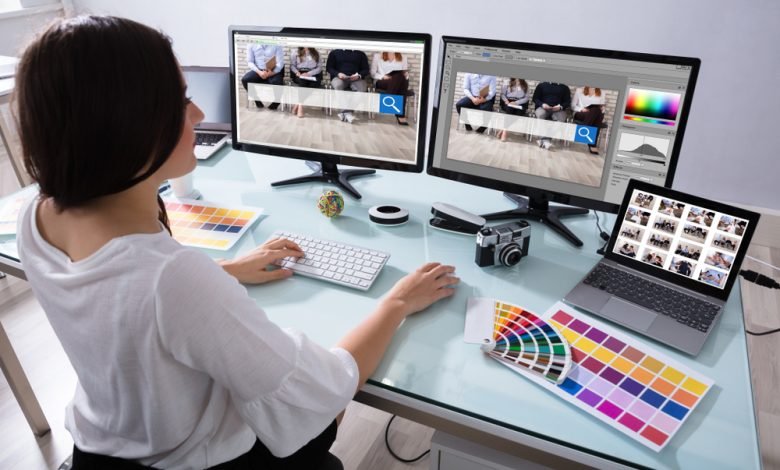How To Ensure Website is Effective And User-Friendly
How To Ensure Website is Effective And User-Friendly

Everyone is aware of the significance of user feedback when it comes to the design phase of a website project. You must run usability studies, establish user stories, and test your design concepts on various user groups.
Nevertheless, the majority of small firms and online initiatives lack the funding necessary to carry out a thorough user testing phase.
Do you want to give user testing actual priority? Consider it an essential step in your processes for web design.
Evaluate, Test, And Improve.
You must be clear about the project goals for your new website before you can do user testing.
We need to step back and consider both user input and user testing before we specifically examine the role of user testing in web design.
Describing User Testing:
In essence, “user testing” refers to the usability testing method, which is used to find and fix issues with your website design.
User acceptance testing and usability testing are two examples of the various forms of user testing.
User testing should be done at every stage of a website project because it allows you to check whether your website is properly tailored to the requirements of your target audience.
Guaranteeing that a method will work for the user is indeed the user testing process.
What Exactly Does User Testing Imply In Relation To Web Design?
You may be wondering, as a web designer, how conducting user tests would affect your duties and why it’s crucial to do so in general.
User testing is a method for determining whether the chosen web design genuinely appeals to your intended audience. To achieve this, test your design on the same population.
These tests are conducted in front of a very small, carefully chosen audience, ideally in a rigid, watchful setting. From a web design standpoint, you’re attempting to validate the proposed solutions and test how they perform in practical situations.
Improved User Experience With More Iterations:
The usability and functionality of your website are tested early on in the design process. This test includes a collection of participants who are instructed to carry out specific tasks while being placed in particular circumstances.
In an ideal environment, you would begin testing sketches and wireframes in addition to your final design documents.
Finding a perfect transition point from the drawing to the low-fidelity to high-fidelity mockups is essential to any design process. You can avoid failing with your finished prototype on a high-fi level by taking into account user tests at even extremely low-fi levels.
Your User Testing Action Plan:
A frequently underutilized tool for creating better web designs is user testing. We encourage you to take user tests into consideration for your upcoming web design project because they allow you to learn in-depth insights about the cognitive processes of your target customers.
And to get user testing going throughout your design phase, I’d like to propose doing the following:
.Make a test strategy (and think about scope, budget, and limitations)
.Make a list of objectives and due dates.
.Examine the aforementioned tools and register for the ones that seem to
.The ideal match for you
.During the design phase, begin including your initial user tests.
Web Designers’ Tools For User Testing
There are thorough test suits available that walk you through the complete workflow of usability testing. Nevertheless, for web designers that are merely seeking for a simple and fast method to begin user testing, they could be a little intimidating.
As a result, I want to concentrate on the resources, checklists, and templates that provide a rapid start kit.
Google Forms for Sketch Testing:
Pen and paper are still preferred when developing a new website’s initial concepts. There’s a good chance that your users can’t see a low-resolution drought or anything else.
It’s crucial to test your theory about the conceptual understanding and mental processes of your users at this project stage. You can evaluate the success of your initial sketches and ideas by conducting exploratory testing.
You can learn more about your consumers’ cognitive processes and validate your hypothesis by using Google Forms (or other comparable survey tools).
Moderated Wireframe Testing With The Marvel App:
User testing gets more advanced when you have some basic low-fi wireframes to show people. Decide whether you like regulated or unmoderated user testing among the first things to do.
On the one hand, an unmoderated trial gives you a better picture of how people in the real world react to your design.
Yet, moderated user testing gives you control over the user’s surroundings and is strongly advised at this early design stage.
Marvel app is a fantastic substitute for working together on wireframes and receiving early user input.
Mockups in Invision:
One of the most well-liked prototype and design tools available to UX designers is Invision. We also adore it. Also, it’s useful if you run remote user tests because it lets consumers browse through many draughts of stories and designs.
It’s also helpful to get informal feedback from users and modify your design draughts with the rapid comment- and annotation features.
High-resolution mockups and completed click dummies perform best with Invision.
Summary
Web designers should be aware of the benefits of quick and simple user feedback cycles when working on new projects. Design draughts can be easily evaluated among various user groups using the aforementioned user testing tools, and qualitative feedback is swiftly acquired for design iterations.
You may improve user experiences and more appealing designs by prioritizing user testing in your web design projects.
A custom and professional web design is a difficult thing to accomplish, but the process is made alot smoother and simpler by hiring a professional we designer to create one for you. Its an investment that I highly recommend.




